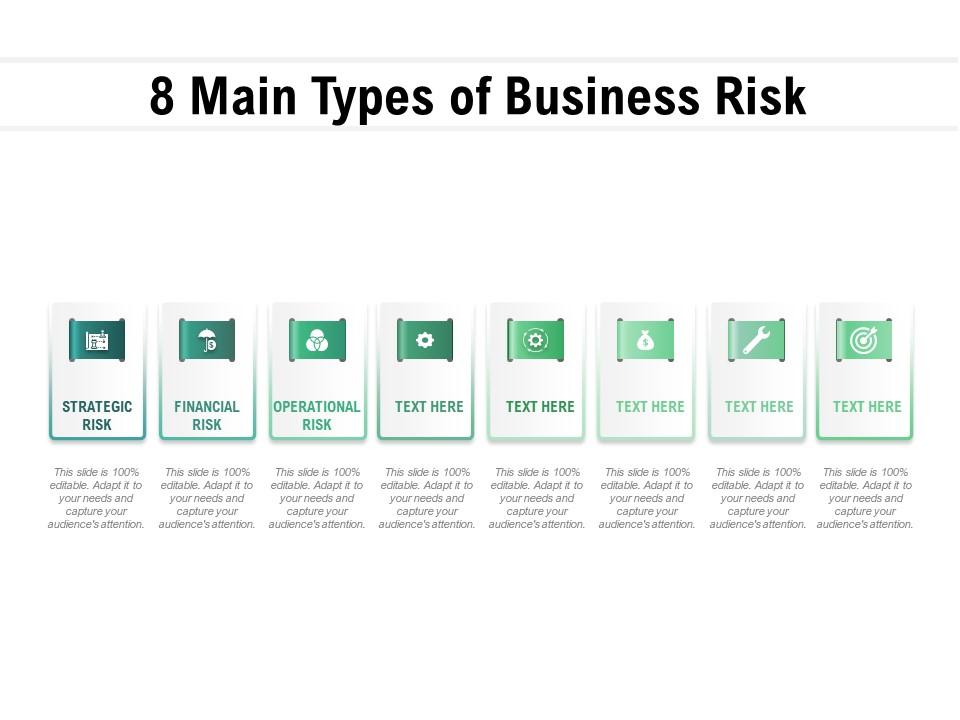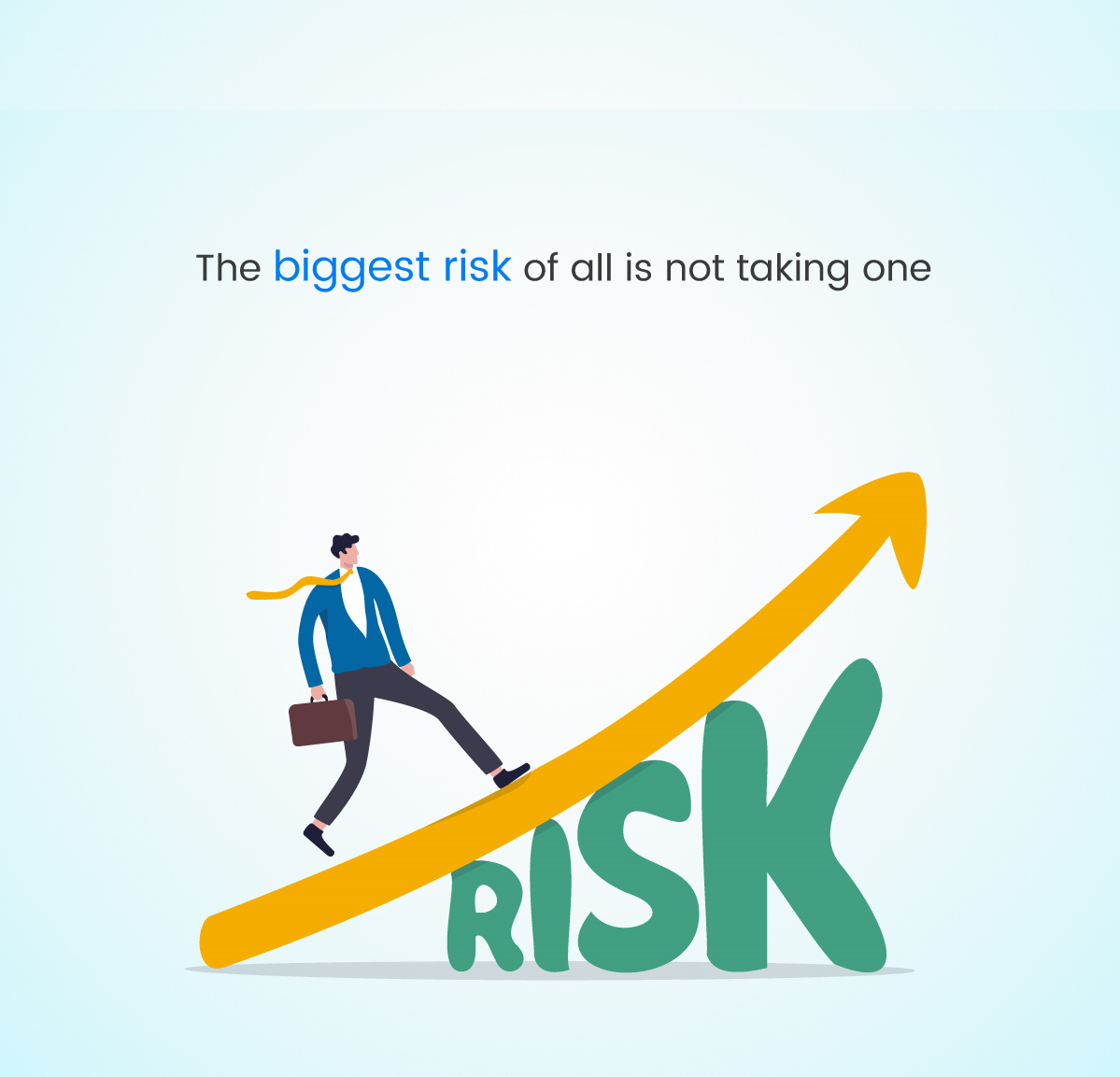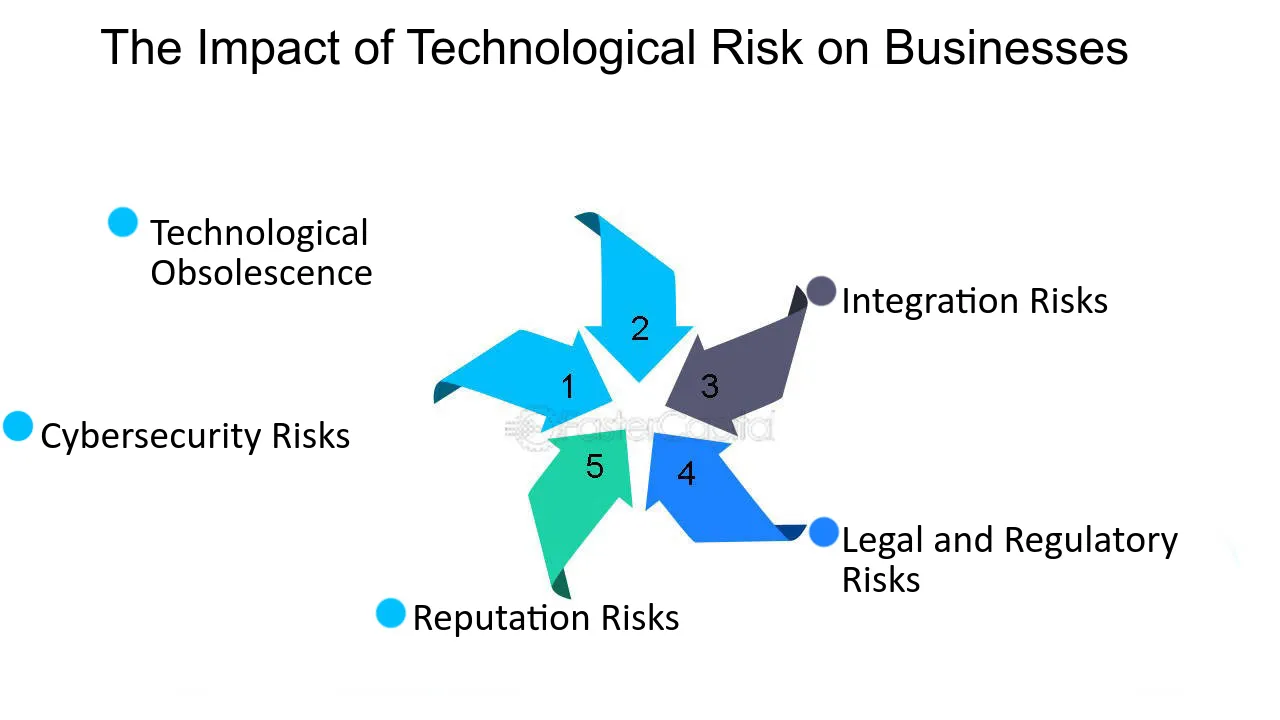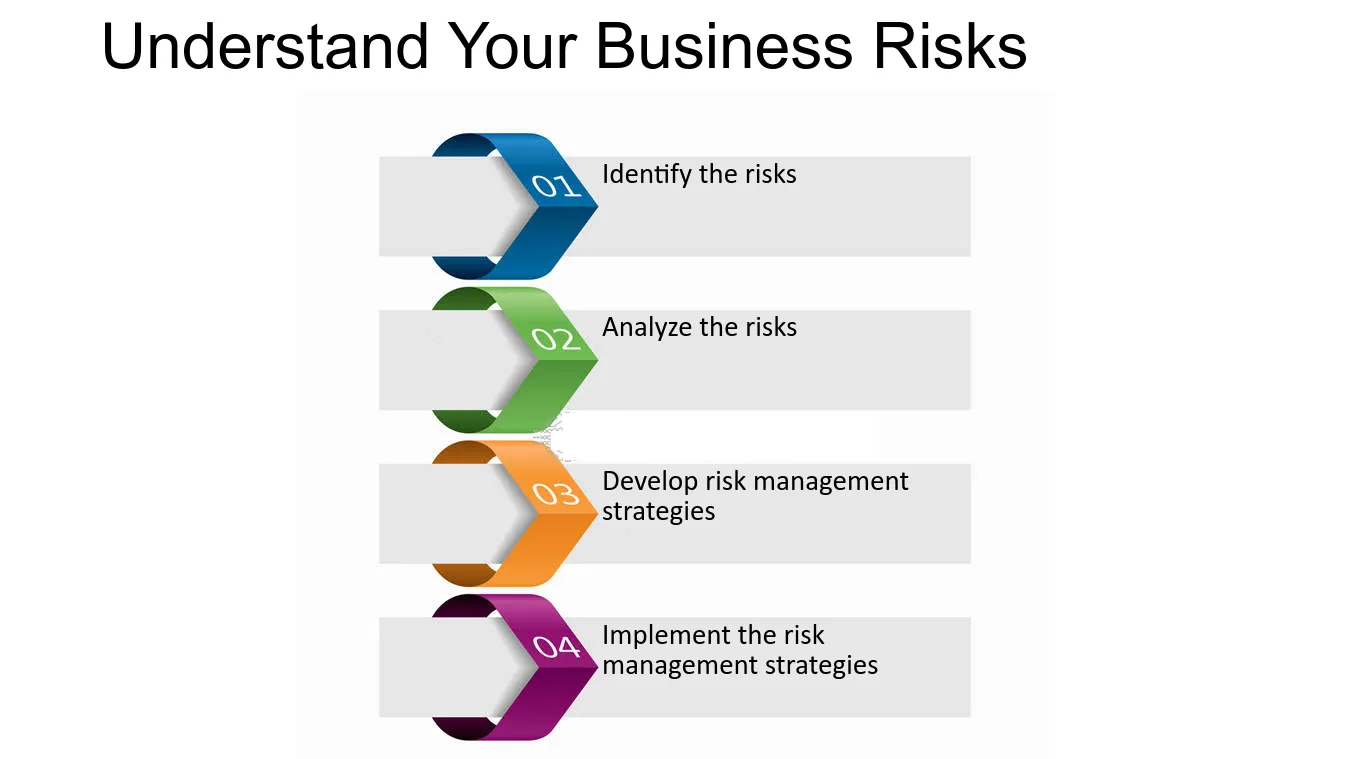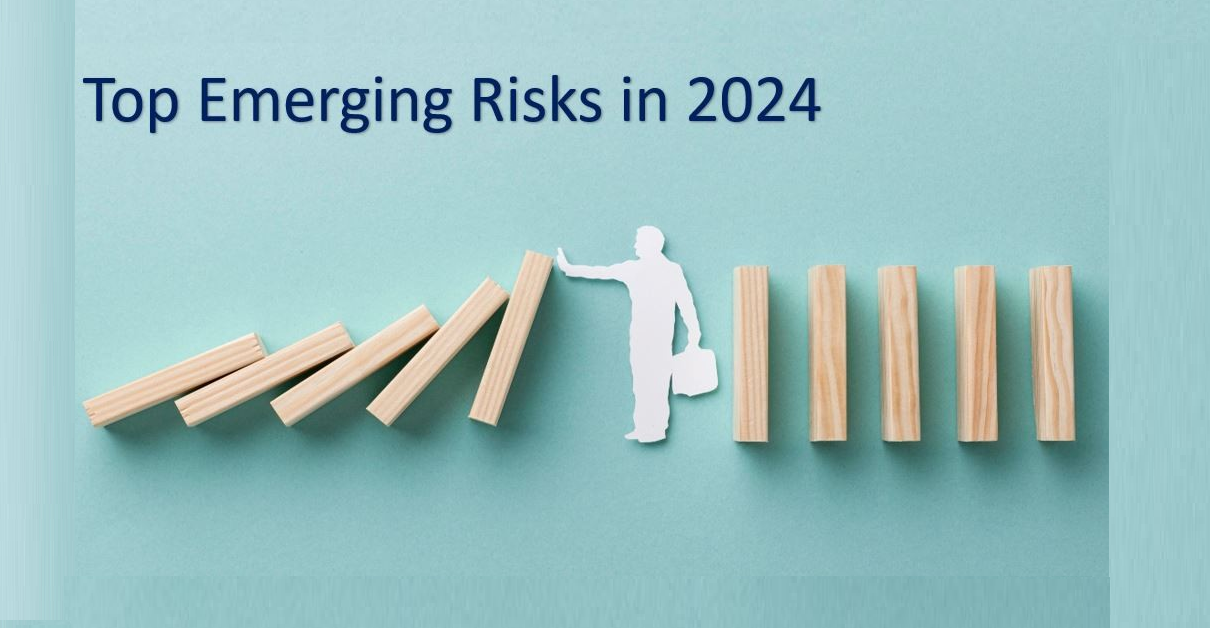
In the dynamic landscape of 2024,the biggest risks and threats to businesses in 2024, face an unprecedented array of risks and threats, navigating a minefield of challenges that demand proactive strategies. Cybersecurity vulnerabilities remain a towering concern, with sophisticated cybercriminals constantly refining their tactics, posing severe threats to sensitive data and operational continuity.
Simultaneously, climate change emerges as a critical risk, with extreme weather events, resource scarcity, and environmental regulations posing substantial threats to businessoperations. From supply chain interruptions due to natural disasters to the mounting urgency for sustainable practices, enterprises must adeptly navigate these environmental challenges to thrive amidst this shifting paradigm.
The 8 Biggest Risks And Threats To Businesses
According to the World Economic Forum's Global Risks Report 2023, the top eight risks that businesses will face in 2024 are:
1. Economic Confrontations
The rise of protectionism and trade disputes is a threat to global economic growth and stability. Businesses need to be prepared for disruptions to supply chains and international trade.
2. Technological Governance
The rapid pace of technological change, particularly in areas such as artificial intelligence and biotechnology, is creating new risks and ethical dilemmas. Businesses need to develop responsible and ethical frameworks for the use of technology.
3. Cybersecurity
Cyberattacks are becoming increasingly sophisticated and costly, posing a major threat to businesses of all sizes. Organizations need to invest in robust cybersecurity measures to protect their data and systems.
4. Social Cohesion Erosion
The erosion of social cohesion, including rising inequality, political polarization, and social unrest, is a threat to stability and cooperation. Businesses need to operate in a way that promotes social inclusion and equity.
5. Biodiversity Loss
The decline of biodiversity is a threat to ecosystems and the services they provide, such as pollination, water purification, and climate regulation. This has implications for agriculture, forestry, and other industries that rely on natural resources.
6. Extreme Weather
The increasing frequency and intensity of extreme weather events, such as heatwaves, droughts, floods, and wildfires, is causing widespread disruption and damage. Businesses need to be able to adapt to these events and build resilience.
7. Livelihood Crises
The rise of unemployment, underemployment, and poverty is a major threat to social stability and economic growth. This is exacerbated by factors such as automation, demographic shifts, and global economic uncertainty.
8. Climate Action Failure
The failure to mitigate climate change and adapt to its impacts poses a significant threat to businesses. This includes the physical risks of extreme weather events, as well as the transition risks associated with the move to a low-carbon economy.
Top Emerging Risks In 2024
In addition to the eight global risks identified by the World Economic Forum, there are several other emerging risks that businesses should be aware of in 2024. These include:
- The increasing importance of sustainability -Consumers and investors are increasingly demanding that businesses operate in a sustainable way. Businesses need to develop strategies for reducing their environmental impact and improving their social responsibility.
- The changing nature of work -The rise of automation, the gig economy, and the remote workplace is changing the nature of work. Businesses need to adapt to these changes and develop new strategies for managing their workforce.
- The growing importance of data privacy -As businesses collect more and more data about their customers and employees, data privacy is becoming increasingly important. Businesses need to have strong data privacy practices in place to protect their customers' data and comply with regulations.
- The rise of misinformation and disinformation -The spread of misinformation and disinformation online is a threat to democracy, public health, and economic stability. Businesses need to be able to identify and combat misinformation in order to protect their reputations and make informed decisions.
- The weaponization of artificial intelligence (AI) -AI is becoming increasingly powerful and sophisticated, and there is a growing risk that it could be used for malicious purposes, such as cyberattacks, autonomous weapons, and surveillance.
Geopolitical Instabilities And Regulatory Shifts
Geopolitical instabilities and regulatory shifts are two of the most significant challenges facing businesses today. These interconnected forces can have a profound impact on a company's operations, supply chains, and markets.
Geopolitical Instabilities
Geopolitical instabilities refer to tensions, conflicts, and power shifts between countries or regions. These instabilities can lead to trade wars, sanctions, and other disruptions that can make it difficult for businesses to operate globally. For example, the ongoing conflict between Russia and Ukraine has caused significant disruptions to energy markets and supply chains.
Regulatory Shifts
Regulatory shifts refer to changes in government laws and regulations that affect businesses. These shifts can be driven by a variety of factors, such as political changes, public opinion, and technological advancements. For example, the recent passage of the Inflation Reduction Act in the United States will have a significant impact on the renewable energy sector.
Impact On Businesses
The combination of geopolitical instabilities and regulatory shifts can create a challenging environment for businesses to operate in. Businesses may need to adapt their strategies, change their supply chains, and find new markets in order to survive and thrive.
How Geopolitics And Regulation Affect Businesses?
- Data privacy regulations -Data privacy regulations can increase the cost of collecting and storing data, but they can also protect businesses from data breaches.
- Environmental regulations -Environmental regulations can increase the cost of doing business, but they can also create opportunities for businesses that develop new environmentally friendly products and services.
- Sanctions -Sanctions can prevent businesses from doing business with certain countries or individuals, which can disrupt supply chains and make it difficult to access new markets.
- Trade wars -Trade wars can lead to tariffs and other barriers to trade, which can make it more expensive for businesses to import and export goods.
How Businesses Can Manage Geopolitical Instabilities And Regulatory Shifts
There are a number of things that businesses can do to manage geopolitical instabilities and regulatory shifts:
- Invest in innovation -Businesses that invest in innovation are better equipped to adapt to changing geopolitical and regulatory environments. This can include developing new products and services, improving operational efficiency, and exploring new markets.
- Diversify markets and supply chains -Businesses need to diversify their markets and supply chains to reduce their exposure to geopolitical risks. This can be done by expanding into new markets and sourcing goods and services from a variety of suppliers.
- Build relationships with key stakeholders -Businesses need to build relationships with key stakeholders, such as government officials, regulators, and industry associations. These relationships can help businesses to understand and influence regulatory changes.
- Develop a risk management plan -Businesses need to develop a plan to identify, assess, and mitigate risks. This plan should include a process for identifying potential risks, assessing the likelihood and impact of each risk, and developing strategies to mitigate those risks.
- Stay informed -Businesses need to stay up-to-date on the latest geopolitical events and regulatory developments. This can be done by subscribing to news feeds, attending industry events, and working with consultants.
Technological Evolution And Risks
Technological evolution has been a driving force behind human progress and societal advancement. From the discovery of fire to the development of the internet, technological innovations have revolutionized how we live, work, and interact with the world around us. However, as technology continues to evolve at an unprecedented pace, it also brings with it a range of potential risks that need to be carefully considered and mitigated.
Emerging Technologies And Associated Risks
The rapid advancements in artificial intelligence (AI), biotechnology, robotics, and other emerging technologies hold immense promise for solving complex problems and improving our lives. However, these powerful technologies also raise concerns about potential misuse and unintended consequences. Some of the key risks associated with emerging technologies include:
- Loss of control and human autonomy -Overreliance on technology and automation could lead to a loss of human control and decision-making, particularly in critical areas like transportation, defense, and healthcare.
- Environmental impacts -The development and widespread adoption of new technologies can have unforeseen environmental consequences, such as resource depletion, pollution, and ecological disruption.
- Ethical dilemmas and biases -Algorithmic decision-making and AI-powered systems can perpetuate biases and discrimination, leading to unfair outcomes in areas like employment, criminal justice, and healthcare.
- Weaponization and surveillance -AI and robotics could be used for malicious purposes, such as autonomous weapons systems and mass surveillance, posing threats to individual privacy and international security.
- Job displacement and automation -Automation and AI are expected to displace millions of jobs across various industries, leading to economic disruption and social unrest if not managed effectively.
Mitigating Technological Risks
To effectively address the risks associated with technological evolution, a multi-pronged approach is necessary.
- International cooperation and risk sharing -Foster international cooperation and risk-sharing mechanisms to address global challenges posed by emerging technologies, such as cyberattacks and environmental threats.
- Education and skills development -Invest in education and training programs to equip individuals with the skills and knowledge needed to navigate the changing technological landscape and adapt to new job opportunities.
- Regulatory oversight and accountability -Implement robust regulatory frameworks to ensure that technologies are developed and used safely, ethically, and responsibly.
- Transparent and participatory development -Encourage open dialogue and collaboration among scientists, engineers, policymakers, and the public to identify and address potential risks early in the development process.
- Responsible innovation and ethical frameworks -Establish clear ethical guidelines and principles for the development and use of new technologies, ensuring that they align with human values and societal well-being.
How To Identify Business Risks?
Identifying business risks is crucial for any organization to survive and thrive. It's about proactively anticipating potential threats and preparing for them before they disrupt operations or damage your bottom line. Here are some effective ways to identify business risks:
1. Analyze Your Internal Environment
- Financial health -Review your financial statements and identify potential vulnerabilities, such as high debt, declining revenue, or dependence on a few key customers.
- Operations -Assess your operational efficiency, identifying bottlenecks, outdated processes, or potential safety hazards.
- Technology - Evaluate your technology infrastructure for vulnerabilities like outdated software, cybersecurity threats, or reliance on single vendors.
- Human resources -Analyze your workforce for potential risks like high turnover, skill gaps, or low morale.
2. Research Your External Environment
- Market trends -Stay updated on industry trends, competitor actions, economic shifts, and potential regulatory changes that could impact your business.
- Macroeconomic factors -Consider broader economic factors like inflation, interest rates, and geopolitical events that could affect your business indirectly.
- Environmental and social risks -Analyze the potential impact of environmental regulations, climate change, or social justice movements on your operations.
3. Brainstorming And Scenario Planning
- Gather diverse perspectives -Encourage open discussions with employees from different departments to identify potential risks they've encountered.
- Conduct SWOT analysis -Analyze your Strengths, Weaknesses, Opportunities, and Threats to gain a holistic understanding of your risk landscape.
- Develop scenarios - Envision different possible future events and their potential impact on your business to prepare for various contingencies.
4. Leverage Risk Assessment Tools And Frameworks
- FMEA (Failure Mode and Effects Analysis) -Identify potential failures in your processes and their consequences.
- SWOT (Strengths, Weaknesses, Opportunities, and Threats) - Analyze internal and external factors that could impact your business.
- Monte Carlo simulation - Model different scenarios and their probability of occurrence to assess potential losses.
5. Monitor And Update Regularly
- Stay informed -Continuously monitor industry news, regulatory changes, and external events that could pose new risks.
- Review your risk register - Regularly update your risk register with new threats, evaluate their probability and impact, and adjust mitigation strategies accordingly.
- Embed risk management in your culture -Foster a culture of risk awareness and encourage employees to report potential threats and participate in risk management efforts.
FAQ's About The Biggest Risks And Threats To Businesses In 2024
What Are The Risk Trends For 2024?
As cyber threats evolve in 2024, organizations must prepare for deepfakes, extortion, cloud targeting, supply chain compromises, and zero day exploits. Robust security capabilities, employee training, and incident response plans are key
What Is The Biggest Risk To Global Businesses?
The major international risks for businesses include foreign exchange and political risks. Foreign exchange risk is the risk of currency value fluctuations, usually related to an appreciation of the domestic currency relative to a foreign currency.
What Are The Technology Predictions For 2024?
Generative AI (Gen AI) chip sales will likely reach US$40 billion in 2024 and nearly all enterprise software companies will integrate gen AI in at least some of their offerings by the end of 2024, which could boost revenue by US$10 billion
Conclusion
As businesses surge into 2024, the landscape of risks and threats they face is multifaceted and dynamic, demanding a resilient and adaptive approach. From the omnipresent specter of cybersecurity breaches to the far-reaching implications of geopolitical tensions, the risks are intricate and interconnected. The unwavering escalation of climate change impacts further underscores the urgency for sustainable practices.
Nevertheless, with challenge comes opportunity. Organizations that adeptly navigate these hazards can emerge stronger, more agile, and better prepared for an evolving future. The journey ahead demands a fusion of strategic foresight, technological prowess, agile adaptation, and an unwavering commitment to sustainable and ethical practices.
